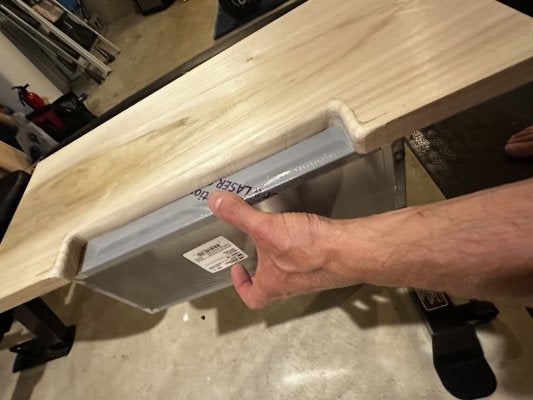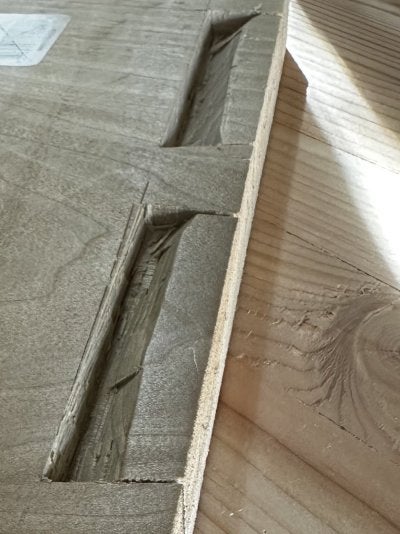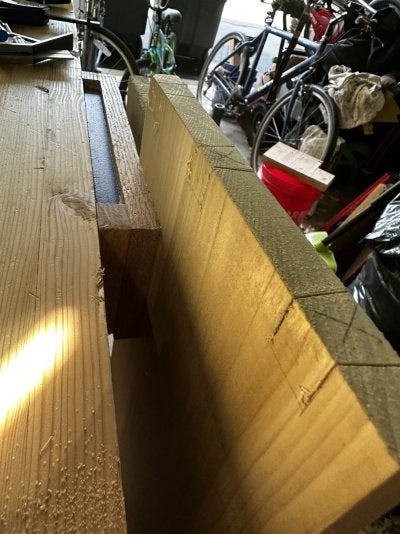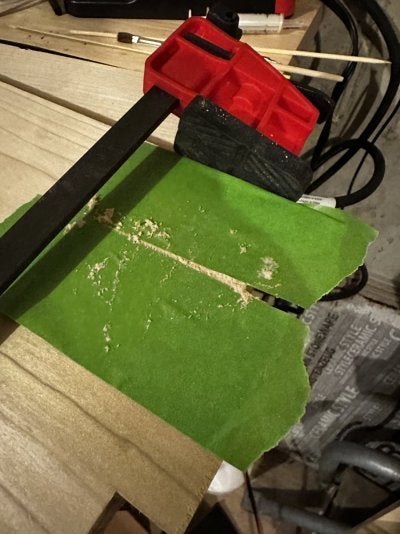BigDaddy23
Tele-Holic
A tung oil finish would also be good. It will highlight the grain of the timber and is also super easy to repair with a small dab of oil on a cloth. You can still steam out dents in the finish later too (if required).
A tung oil finish would also be good. It will highlight the grain of the timber and is also super easy to repair with a small dab of oil on a cloth. You can still steam out dents in the finish later too (if required).
I have to admit that I didn’t think I’d be very successful on my first attempt, so I don’t have any real ‘build’ pictures to share.



















Either way you gotta sand and sand and sand til it feels like glass, sanding between finish coats with increasingly finer sandpaper.

I use a Bosch random orbital sander. To get a glass smooth hand rubbed oil finish it’s all about the process. I start with 120 grit to get everything even and remove any burps or farts. Then I soak a sponge with water and wipe the whole cabinet down. After drying you’ll feel a lot of grain “whiskers” that have risen as a result of getting wet. Next sand the cab with 220 grit and again repeat the wetting process. Follow with 330 grit and wet. When I no longer feel the grain raise I do a finish hand sand (with the grain) with some 400 grit paper.Wow, that cabinet looks beautiful. Are you hand sanding between coats? Or can you use an orbital sander? And can you give a ballpark in terms of what grit you start with and what you finish with?
Rockler Woodworking Supply used to make and sell Sam Maloof oil/varnish/wax formula products in a can but discontinued them a year ago. Two different products, 8 or 10 steps. Really nice stuff, I’m down to my last can.you might find this useful with finishing

Was Sam Maloof finish - now added Mike's Magic Mix
I have copied this from Bob's post. viewtopic.php?f=26&t=2613 That mixture has been long known as an "oil/varnish" mixture. It was probably first publicized in the 1960's when Watco came out with their then "magic" finish. Here is something I found that sort of summarizes the whole "Maloof...www.thewoodhaven2.co.uk
Thanks for sharing your process—the results anre impressive. Time consuming and requiring elbow grease, sign me up!It’s time consuming and requires a lot of elbow grease, but the payoff is worth it.
Drying time is different for most things but assuming 70 degrees and low humidity I let most finishes dry for at least 12 hours between steps. For oil, the last step is a wipe on/wait/wipe off with a soft clean rag and then buff, buff, buff. I use old flannel shirt scraps for the buffing. Repeat this process til you have the desired sheen. I’m usually happy around the third or fourth application.
For film finishes, you can spray or brush on the finish. For wipe on poly I actually use a China bristle brush or foam brush depending on the project. It helps to apply the finish with some kind of cross light going on so you can look across the top of the reflection and more easily see defects. Keep in mind the warmer and drier it is the faster film finishes will tack up. Nothing worse than going for one last brush stroke and dragging the tacky finish.
These are just my techniques and methods and by no means reflects those of other more experienced members on this forum. If you’re a newbie I’d suggest getting some scrap wood and practice both finish methods. Whichever way you go remember that if things go sideways you can always wait 24 hours, sand the cab down and start over. Your cab looks solid. Well done. Few people build a hand cut dovetailed cab as their first project.
In lieu of rubber feet, I attach some 1.5” screws to the bottom where the feet will eventually go. Start with the bottom and then flip the cab so it’s resting on the screw heads so you can reach the underside and address any runs. Lets air underneath while it’s drying. More critical with a film finish. With oil I start with the bottom and wipe off the excess before flipping it over.I don’t want to overstay my welcome here on the finishing…but I’ll venture another question: how do you finish the underside without affecting (fingerprints, etc.) one of the other faces? Can you do three sides, let them dry, and then do the fourth? Painter’s pyramids?
In lieu of rubber feet, I attach some 1.5” screws to the bottom where the feet will eventually go.